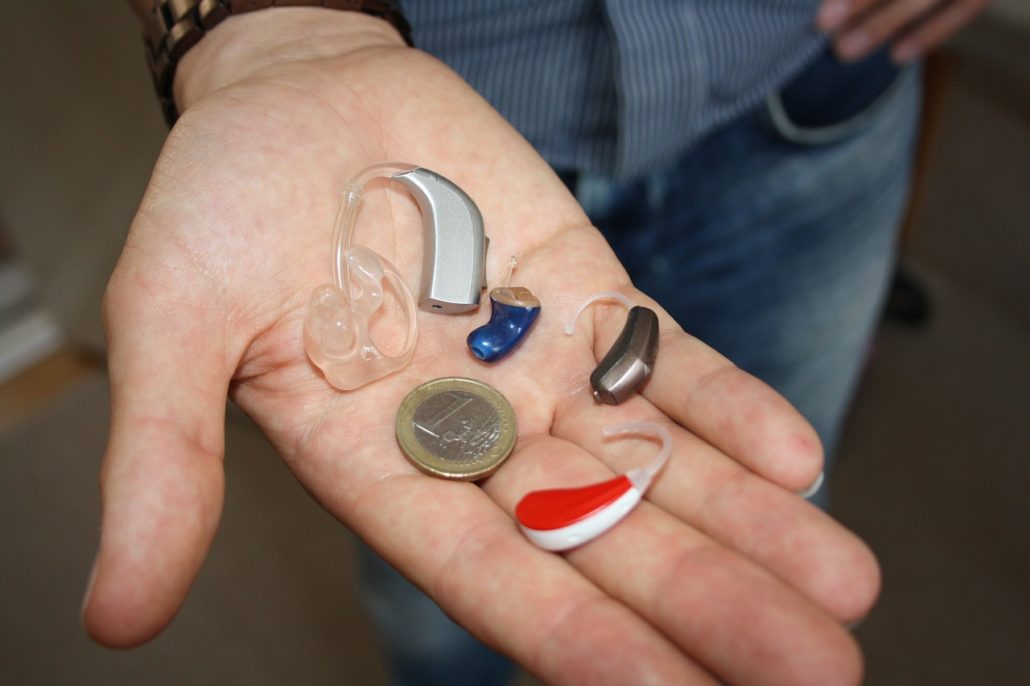11 Things you didn’t know about hearing aid devices
Did you know as early as the 13th century people with hearing loss were using hollowed-out horns from animals as primitive hearing devices?
The first ‘official’ mention of hearing aids ever recorded was in a book published by an Italian physician / scientist in 1588. In the book, he wrote about hearing aids made from wood, shaped like the ears of animals known to have superior hearing.
Isn’t it amazing how far technology has come? The first wearable hearing aid was developed in 1938 by electronic manufacturers in Chicago. But it took another 20 years to create a hearing aid that could completely fit behind the ear.
I vividly remember my first hearing aids at the age of 3. They were the size of cigarette packets and I had to wear them in a little harness – one ‘cigarette packet’ hooked up to each ear. My next pair were BTEs, Behind-The-Ear. I always had the most powerful BTEs and therefore the largest and heaviest size available. Every time I got a new model, I looked with envy at my friend’s tiny hearing aids whilst I had these big lumps. Always beige, beige, beige. In my 30s I was delighted to get a smaller and lighter pair of BTE hearing aids, only to jump back to a large size again when I got cochlear implants. I never made it to the tiny ITEs (In-The-Ear aids). One of the best things about cochlear implants is there are no ear moulds, nothing goes inside the ear canal and my ears can breathe.
Today hearing aids are virtually invisible and help millions of people around the world improve their hearing ability. Here are 11 more things about hearing aid devices I bet you didn’t know.
11 Little known facts about hearing aid devices
- Digital hearing aids can be programmed using your computer to suit your specific preferences. You are able to hear the television and phone in stereo, directly through your hearing aids. They can even sync with wireless devices via Bluetooth.
- Nowadays, hearing aids can be adjusted in the minutest increments. It can differentiate, to a certain extent, between a speech signal and a noise signal. When combined with special induction loops, hearing aids can accurately pick up announcements in crowded places and subtract the background noise and frequency distortions. Very helpful in airports, stadiums, and public transport areas.
- They “remember” the different settings of each listening environment, enabling the hearing aid to revert to your most comfortable setting automatically. The settings are based on your previous use and real-time interactions with the environment.
- Don’t worry about batteries needing to be replaced. Digital hearing aids use rechargeable technology to decrease the cost of upkeep. Even more exciting is the availability of smartphone apps that can assist in improving your hearing aid experience.
- You shouldn’t buy hearing aids online; they have to be programmed by a certified audiologist or hearing specialist. Follow-up visits are just as important to ensure your hearing aids are adjusted properly and working optimally.
- Two hearing aids are better than one, even if you’ve only lost hearing in one ear. Remember sounds come from every direction. Two hearing aids increase your ability to detect which direction a sound is coming from, which can be lifesaving in a certain situation, like crossing a busy street.
- Wearing hearing aids is not like putting on a pair of prescription glasses. Hearing aids don’t always work effectively at the beginning. Usually, an audiologist won’t set your hearing aid to full prescription at the beginning, but rather they allow you time to adjust, so you don’t feel overwhelmed. It can take up to three visits to get your hearing aids completely tuned in.
- It takes time to get used to. Your brain might not be used to disguising between which sounds are important and which aren’t. It needs a bit of exercise. Just like trying to establish a new habit will take time, so does the habit of using your hearing aid.
- You should ask the hearing specialist if you can take the hearing aids for a test drive. Not all of them will allow this, but you wouldn’t buy a car without first taking it around the block a few times.
- Hearing aids can help reduce the symptoms of tinnitus, a condition generally experienced as noises or ringing in the ears or head. Some hearing aids provide a kind of ‘masking’ effect for tinnitus, allowing you to hear sounds more naturally.
- Hearing aids might slow down cognitive decline in the elderly. When you can’t hear properly, you are less engaged, and when we’re not engaged, there tends to be an increase in cognitive decline. So, it stands to reason that when hearing aids boost your confidence to take part in conversations and engage with people, they will help slow down mental decline.
If you have hearing aids and don’t like them, you don’t have to be stuck with them. There are many styles and types available to suit your specific needs. Visit your audiologist and talk to them about your options and the outcome you want to achieve. Healthy Hearing’s trouble shooting guide is a useful check before visiting your audiologist.
I hope these 11 interesting facts about hearing aid devices have encouraged you to learn more about hearing loss and the ways in which you can live a better quality life. Or if your spouse or parent wears hearing aids and you see them struggling, know there are alternative options available to them.
If this article has inspired you and you want to partner with 121 Captions and create an environment of acceptance and possibility, join our Partner Program.






Trackbacks & Pingbacks
[…] READ ON […]
Leave a Reply
Want to join the discussion?Feel free to contribute!